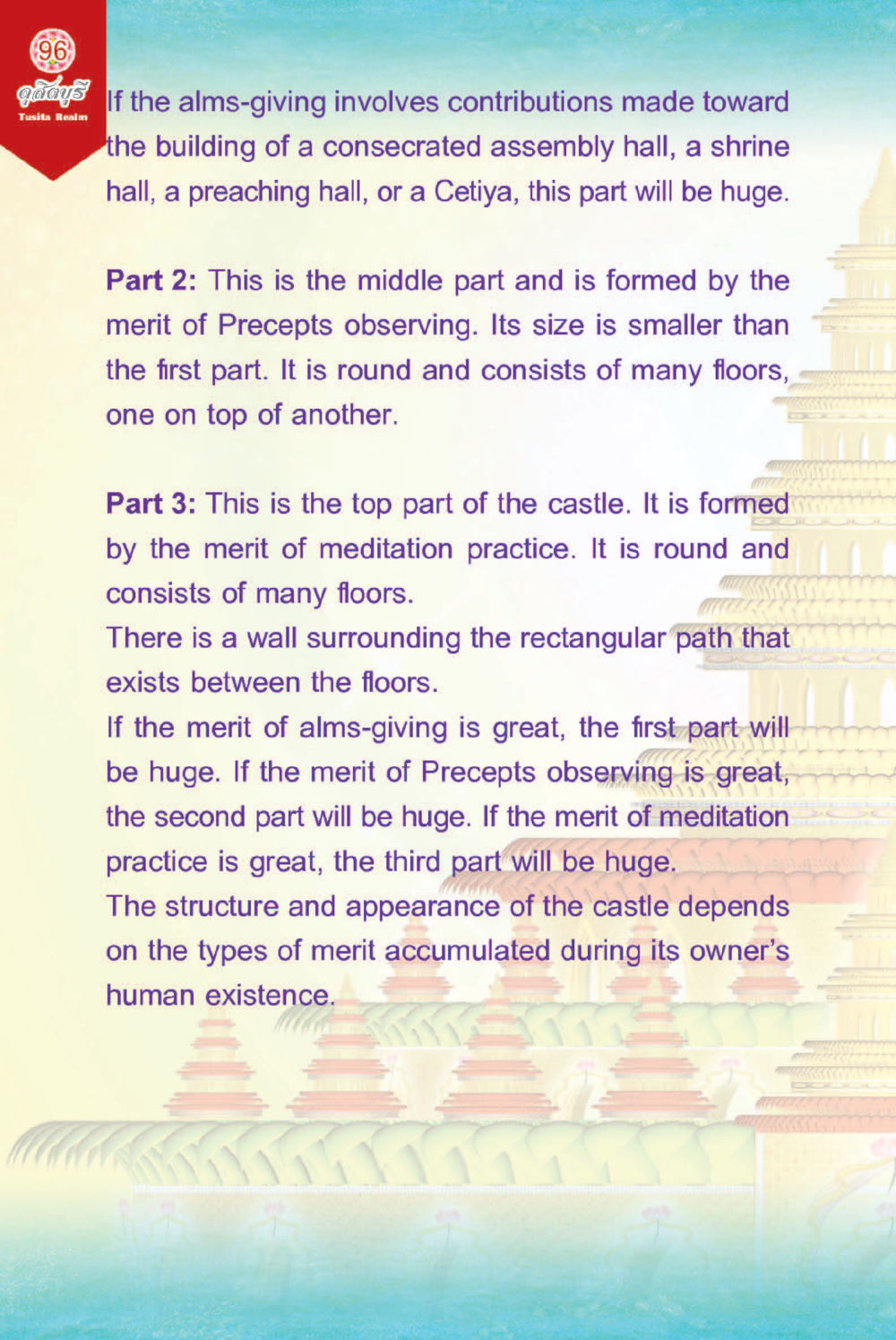The Structure of Merit in Buddhist Practice : หน้า 96/112
ดุสิตบุรี (ฉบับ ๒ ภาษา) Tusita Realm : หน้า 96/112 Exploration of the concept of merit in Buddhism and its representation in a symbolic castle structure.
2 ครั้ง

สรุปเนื้อหา
In Buddhism, the concept of merit manifests through a symbolic castle structure, divided into three parts: the base formed by alms-giving, the middle by observing precepts, and the top by meditation practice. Each part's size reflects the amount of merit accumulated, illustrating how spiritual practices contribute to one's spiritual growth. Alms-giving contributes to a large base, precept observance gives a smaller middle, and meditation builds the top. This hierarchy emphasizes the significance of different practices in the journey towards enlightenment. The castle's design serves as a metaphor for the merits earned throughout one's life, shaping the spiritual journey of the individual.
หัวข้อประเด็น
- alms-giving significance
- merit accumulation
- Buddhist practices
- precepts observance
- meditation benefits
- spiritual journey representation
















































































































